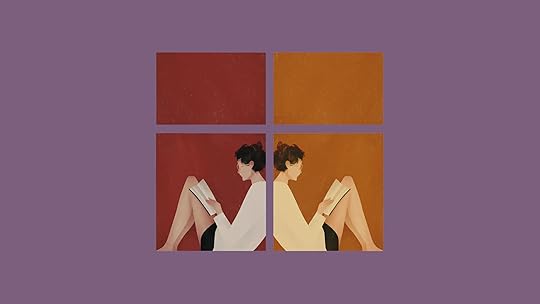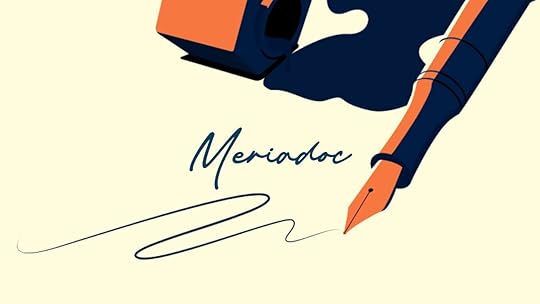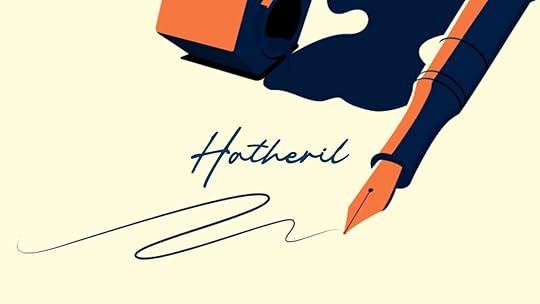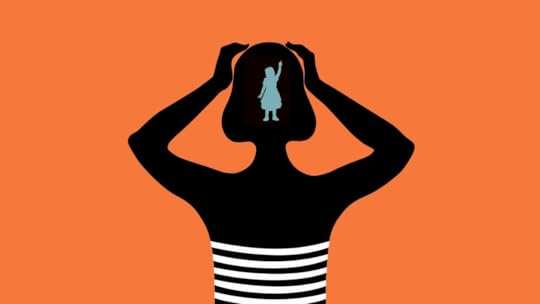Louise Dean's Blog, page 3
May 19, 2025
Open With the Action: Mastering ‘In Medias Res’ | The Blog | The Novelry
 In medias res (not in media res) means starting a story in the middle. We define the technique and give some examples for writers in this helpful blog.
In medias res (not in media res) means starting a story in the middle. We define the technique and give some examples for writers in this helpful blog.
Open With the Action: Mastering ‘In Medias Res’ | The Blog
 In medias res (not in media res) means starting a story in the middle. We define the technique and give some examples for writers in this helpful blog.
In medias res (not in media res) means starting a story in the middle. We define the technique and give some examples for writers in this helpful blog.
May 18, 2025
Chris Hadfield’s Out-Of-This-World Writing Advice | The Blog | The Novelry
 Chris Hadfield may be best known for orbiting the Earth, but he is also a multiple New York Times bestselling author. Read on for his stellar writing advice!
Chris Hadfield may be best known for orbiting the Earth, but he is also a multiple New York Times bestselling author. Read on for his stellar writing advice!
Chris Hadfield’s Out-Of-This-World Writing Advice | The Blog
 Chris Hadfield may be best known for orbiting the Earth, but he is also a multiple New York Times bestselling author. Read on for his stellar writing advice!
Chris Hadfield may be best known for orbiting the Earth, but he is also a multiple New York Times bestselling author. Read on for his stellar writing advice!
May 15, 2025
Could You Write The Next Big Story? | The Blog
 Enter The Next Big Story creative writing prize at The Novelry for a chance to win $100,000 (£75,000). Eight shortlisters will receive The Finished Novel Course.
Enter The Next Big Story creative writing prize at The Novelry for a chance to win $100,000 (£75,000). Eight shortlisters will receive The Finished Novel Course.
May 14, 2025
Beta Readers and How to Work With Them | The Blog
 A beta reader can be a great help to an author, but what do beta readers do, and how far does beta reading go in terms of feedback? We explain all in this blog!
A beta reader can be a great help to an author, but what do beta readers do, and how far does beta reading go in terms of feedback? We explain all in this blog!
May 11, 2025
Sowing Seeds: Why Writing is Like Gardening | The Blog
 Writing a novel is like growing a garden: as the author, you plan, prepare, plant, nourish, water, and care for your story. The result? A beautiful book in bloom!
Writing a novel is like growing a garden: as the author, you plan, prepare, plant, nourish, water, and care for your story. The result? A beautiful book in bloom!
September 10, 2022
Samantha Shannon on Language in Fantasy Fiction
In a fantasy world, the author has enviable freedom in creating the language their characters speak. From ancient languages to fully fictional languages, the possibilities are exhilarating.
Even if you decide your fantasy novel won’t be full of invented words, you can still follow in the footsteps of Samantha Shannon and pull from foreign languages and obsolete tongues.
The New York Times and Sunday Times bestselling author of fantasy novels including The Bone Season series and The Priory of the Orange Tree, Samantha Shannon knows how languages work in speculative fiction. She’s found ways of arranging words and constructing phrases that add extra depth to her characters and world-building.
Ahead of her Live Q&A with members of The Novelry on September 19th at 6pm BST, Samantha shares her thoughts and advice on choosing language for your fantasy worlds.
The balance between accuracy and clarity
A few years ago, I was sitting in a friend’s garden, poring over the copyedits for my fourth book, The Priory of the Orange Tree. The page was hatched with red marks, and out of curiosity, my friend – a fellow author – asked me about the last change I’d made.
‘It’s campfire,’ I explained. ‘I can’t use it. It wasn’t created until 1835.’
I had started to cull words that first appeared after the seventeenth century, fearing they were too modern, too much a part of our own language. I feared they might stop a reader from getting immersed in a fantasy world inspired by that period. It was only when my friend pointed out how severely this was going to restrict my vocabulary that I realised I might need to let it go.
Tracking the history of words
As a fantasy author with a keen interest in etymology, wrestling with language in my books is both an invigorating challenge and an eternal source of frustration.
It took me over a year to decide on a naming system for The Priory of the Orange Tree, and I now have a sprawling Word document to keep track of where each character and place name originates, and what it means.
As a fantasy author with a keen interest in etymology, wrestling with language in my books is both an invigorating challenge and an eternal source of frustration.
I love this stage of writing a book – a stage that often continues very late into the process – and I’m never happier than when a name I’ve been working on for a long time finally clicks together.
However, if you’re the sort of writer who pays as close attention to etymology as I do, the very means by which you tell a story can start to feel like a potential weakness in your world-building.
Consider indigo – it comes from the Greek indikón, referring to India. Can a world without India have a colour called indigo? Take care before you turn to turquoise – that one comes from the French for Turkish. There are many words like this: champagne, burgundy.
Each writer makes their own choice when it comes to where and how to draw a line in the sand. If we thought about this too much, we might conclude that high fantasy should only be told through constructed languages (or conlangs). Since a separate world would logically have none of ours, we might assert, we should spend much of our time creating fictional languages.
Even Tolkien wrote The Lord of the Rings in English, though he addressed this in the appendices – the book is presented as a translation from Westron, the common tongue of Middle-earth. In Westron, Meriadoc Brandybuck’s name is Kalimac. Its short form, Kali, means ‘jolly’ – hence Tolkien choosing to translate it as Meriadoc, or Merry, in English.

Language, gender and sexuality in fantasy fiction
Being a sapphic woman and a feminist to boot, I’m especially fascinated by the linguistic constraints – and possibilities – of expressing gender and sexuality in secondary worlds.
When we move into a fantasy realm, we face the question of how to address and signal a character’s identity in a way readers will understand, since words that apply in the real world can become difficult in a secondary one.
Sapphic, for example, relies etymologically on the existence of the poet Sappho; lesbian comes from the Greek island of Lesbos, where she lived.
When we move into a fantasy realm, we face the question of how to address and signal a character’s identity in a way readers will understand.
Historical fiction presents a similar conundrum – many of the words we use now didn’t exist in the past.
My fascination with words
My interest in the relationship between gender, sexuality and language began in one of my first classes at university, where I studied English Language and Literature.
In my Old English class, I learned that cunt didn’t begin life as a profanity – it was simply the common term for the vagina and vulva before the Norman Conquest.
Later, I learned that the male side of the family was the sperehealf (spear-half) and the female line of descent, the spinelhealf (spindle-half).
Granted, this example sets out distinct, binary gender roles. But I also learned that the Anglo-Saxons also had a gender-neutral word for a human being – mann. That’s why mankind has been historically used to describe humankind – because mann really did used to be the default word for a human being, regardless of sex. A male human was a wæpmann (‘weapon-human’) or wer (‘male human’), and a female human was a wif (‘wife, female human’) or wifmann (‘female human’).

If this had endured, mann could have been used today by those who identify as non-binary, or to describe a person whose sex or gender identity is unknown.
However, at some point, wer and wæp- were dropped – we see them now only in werewolf (‘man-wolf’) – and mann became the word for both a human and a male-identifying human, with one inextricably tied to the other.
The consequence is that nowadays, women are othered by our own descriptor. Our name means woman-human, wife-human. We are an add-on to essential humanity, requiring a prefix to distinguish us, while men are the default.
Speculative fiction is a wonderful laboratory for language
Speculative fiction has historically tried to tackle some big questions around language. We can write stories in such a way that the language calls attention to, questions or outright rejects its own meaning. We can even use constructed language to spurn the power structures that uphold our own language as it’s currently spoken.
Speculative fiction has historically tried to tackle some big questions around language.
In 1984, the American author and linguist Suzette Haden Elgin published the novel Native Tongue, using the fantasy genre to depict a world in which the 19th Amendment was repealed in the early nineties. Stripped of their civil rights, the women of the novel secretly create their own means of communication.
Elgin constructed this language, Láadan, to counter what she perceived as the androcentric nature of the words we use, and to give women a way to express themselves, free of the limits imposed by patriarchy. Her characters used new sounds and new words to stake their claim to power and self-determination.
Láadan was an experiment, with Elgin posing the hypothesis that women would either embrace and start using it, or respond to the idea, but not the language itself. Neither happened – Láadan received almost no attention.
Still, Elgin’s attempt to address the sexism of language demonstrates the possibilities of using science fiction as an engine for change. Words and phrases like hatheril (the English equivalent being something akin to ‘woman-time’), loláad oyanan (‘to perceive with the skin’) and nárilim (‘quest internally’) express complex thoughts and feelings with effective concision.

You don’t have to create a fictional language to say something new
Even if writers don’t create a fantasy language for our fictional worlds, we can grapple with the ones we have.
The newest addition to my Bone Season series, The Mask Falling, is set in Paris in an alternate 2060. In this instalment, I found myself having to rework a real world language for the first time.
While the sprawling empire of The Bone Season is often brutal, it certainly isn’t patriarchal – it was shaped by a being who identifies as she and comes from a society without gender roles.
It therefore made no sense to me that her France would use the rule le masculin l’emporte sur le féminin (‘the masculine prevails over the feminine’). Proclaimed by Nicolas Beauzée in the seventeenth century, this rule means that a mixed-gender group is always described as masculine in French.
You could have fifty women in a room, but if one man joins them, the group turns masculine. However, if a single woman joins a group of fifty men, the group does not become feminine.
I found myself having to rework a real world language for the first time.
To deal with this, I considered several approaches, including l’écriture inclusive, which employs the point médian to combine masculine and feminine words, rendering them neuter. Writers would be les écrivain·e·s, combining les écrivains (masculine) and les écrivaines (feminine).
Eventually, I decided that feminine and masculine group nouns would simply be interchangeable, sometimes influenced by the speaker’s own gender identity. I retained the words of this foreign language, but signalled to my reader that they could be used flexibly, in a way that makes sense for each character.
Titles, honorifics and gender
There was also the issue of honorifics when I was writing.
In French, women without a professional title are traditionally either Madame or Mademoiselle. Legally, Madame is now the honorific of choice – after a dedicated campaign by French-speaking feminists, Mademoiselle was excluded from official documents in 2012.
Despite the concern that Mademoiselle is sexist, France still uses it in some contexts, especially in reference to younger women. French-speaking friends admitted they’d find it odd for my twenty-year-old protagonist to be addressed as Madame.
Despite this, I couldn’t reconcile myself to the idea that a woman’s honorific in Scion France would be affected by either her age or her marital status (when men are simply Monsieur), so I began constructing alternatives.
I knew I was taking a risk – but fantasy, of all genres, requires readers to take a leap of faith.
I thought I was on to something when I found the term donzelle, but when I checked with my French translator, he told me it had a pejorative undertone in real life. I considered citoyenne (citizen), used during the French Revolution, but that felt too distinctly tied to one period of history.
Finally, we settled on Madelle, a portmanteau of the two existing honorifics. First proposed for official use in Québec, it also appears in the seventeenth-century writings of Nicolas-Claude Fabri de Peiresc, and while it lacks clear etymological logic, it serves to erase age and marital status.
I knew I was taking a risk – but fantasy, of all genres, requires readers to take a leap of faith. I could only hope readers would be able to grasp its meaning through context.
Titles and honorifics in epic fantasy
Honorifics and titles can also present a challenge in epic fantasy worlds, which are often thronged by emperors and empresses, lords and ladies, kings and queens.
Queen – a word that feels as if it should be purely empowering for women – is from Old English cwēn (‘wife, woman’), from Proto-Germanic kwoeniz (‘wife’), itself from Proto-Indo-European gwen- (‘woman’). It was first used to describe the female consort of a king, not a woman who held power in her own right. This makes it inextricably linked to marriage and gender, while king has no obvious link to either. King is a word for a ruler, not a consort.
Honorifics and titles can also present a challenge in epic fantasy worlds, which are often thronged by emperors and empresses, lords and ladies, kings and queens.
Of course, there are alternatives to queen. Having such a distinctly separate word for a female ruler is a linguistic oddity. It’s more common for the word to be a feminised version of a masculine title, such as Sultana (from Sultan) or Augusta (from Augustus).
Sometimes there is no distinction at all – Hatshepsut and Cleopatra called themselves pharaohs, not ḥmt nswt wrt (‘Great Royal Wife’). In seventeenth-century Angola, Njinga Mbande was ngola – ruler, or king.
The choices I made for my novel
The Priory of the Orange Tree is partly set on an island inspired by Britain, ruled for centuries by women, with the first as a consort and every other as a ruler in her own right.
When I planned it, I briefly considered calling them kings. One could argue that the word queen is unnecessary, since gender has nothing to do with effective rule. At the same time, I was unsettled by the idea of taking a title disproportionately associated with men, making it the default, and removing queen altogether – just as I wouldn’t erase woman simply because of its troublesome etymology.
After some wavering, I decided to embrace the word queen, in all its femininity, and despite its origins. I decided to use the word queendom – often, with confidence. I wanted to help break down the original etymology of queen, creating an explicit association of the word with a woman holding her own power. It looked strange until it didn’t.
After some wavering, I decided to embrace the word queen, in all its femininity, and despite its origins.
To preserve its meaning, my Italian translator created a neologism, reginato, and my French translator used reinaume. In Spanish, however, it was simply rendered as reino (‘kingdom’).
Fantasy writers can create the language they need
While fantasy writers drawing from history have a wealth of options, some titles lack truly gender-neutral alternatives, leaving us to create our own alternatives.
In Priory, I created the titles High Ruler and Warlord, and for my current project, I’ve settled on:
Mastress as an alternative to Mistress and Master
Duchet as an alternative to Duchess and Duke
Lade as an alternative to Lady and Lord
As with Madelle, this might initially cause confusion, but I’m willing to take the risk.
Fantasy is the genre where imagination is the limit – and that applies to language just as much as every other aspect of worldbuilding that the fantasy writer has to play with.
Samantha will be joining us for a live Q&A with members of The Novelry on September 19th at 6pm BST.

Samantha Shannon
Bestselling Fantasy Author
Samantha Shannon is the bestselling author of fantasy novels including The Bone Season series spanning seven novels, and the New York Times and Sunday Times bestselling novel The Priory of the Orange Tree, which was a finalist in the Lambda Literary Awards 2020.
September 3, 2022
Main Characters in Children’s Books and YA Novels
Have you ever encountered a main character in a children’s book or YA fiction that sticks in the mind and refuses to budge long after you’ve closed the pages of the book? What about a character you encountered in your youth that you couldn’t wait to talk about with friends – a poster-worthy heartthrob or a disaster-waiting-to-happen so engrossing you can’t bring yourself to look away?
If you have children, there are probably a few characters they seem besotted by. It’s clear some main characters stay with young readers, and others don’t.
A genuinely fantastic main character can make a book. And we can all agree there’s something special about the ones that won’t let us go, even from children’s books we read long ago. They have some unique charm, energy or personality trait that sets them apart from secondary characters or characters that fade into the background.
In this article, our children’s fiction editor Krystle Appiah shares her advice for creating main characters in children’s literature. And if you’re writing adult characters, these tips apply just as much!

What makes a main character in a children’s book?
If you’ve spent a decent amount of time on social media in recent years, you’ve probably come across the term ‘main character energy’. Though it was first coined in 2006 by , the director of The Holiday, over the last couple of years, it’s been hugely popular, sweeping through social media like wildfire, often accompanied by memes or videos of teens or twenty- or thirty-somethings dancing in the rain while dramatic instrumental music plays; reciting heartfelt, emotionally fraught monologues; or generally acting like they’re the star of their very own book or film.
Yes, it’s satirical, but it does remind us as writers that great, memorable main characters usually have a few things in common.
It might be especially relevant for authors of children’s fiction – a reminder not to make adults too much of the focus of the story, or use adult characters to drive the story forward.
So what is it that makes a great main character? How do you strike the balance between these bewitching, larger-than-life traits and empathy-inducing humanity? What qualities do main characters have that separate them from the have-nots?
Buckle up. Here are five things that make a memorable main character for children’s books and YA fiction.

1) The world revolves around them
The main character of any children’s book is undoubtedly the star of the show.
Think about the characters you loved growing up: Winnie the Pooh, Matilda, Harry Potter, whom you might know from every Harry Potter book and blockbuster film release, not to mention the Fantastic Beasts spin-off movies, theme parks and other tourist attractions.
Often the main characters are such strong characters that the book is named after them. Just think of Peter Rabbit, Peter Pan, Paddington Bear, Alice in Wonderland, Charlie and the Chocolate Factory and so many other books by Roald Dahl. Why? Because it’s their world, and the rest of the cast just exists in it.
Can you imagine Hundred Acre Wood without our beloved Winnie the Pooh to bring all the other characters together? What about Matilda without our magic-wielding heroine playing tricks on unsuspecting bystanders and family members? And the Harry Potter series would most definitely fall apart without The Boy Who Lived.
Everything that happens in a novel, from its plot to its conflicts and subplots, is directly related to the main character. In the very best stories, the main character is so entangled in the events of a novel that the plot would fall to pieces without them, which leads us to point two…

2) Main characters are perfectly positioned to be just that
Just like there’s no one way to write a novel, there’s no one way to perfectly position the main character.
But when deciding who will be your main character, the best friend who constantly pushes another character to pursue their goals but doesn’t actually want anything for themselves might not be the best place to start. A character that ups and moves to a new town halfway through the action might not be the strongest choice either.
A main character in children’s literature needs to be central to the action, influential to the plot and invested in the outcome. After all, the story needs to be all about them – and they need to act like it. Young girls can be strong female characters in children’s books.
Take Sophie in Katherine Rundell’s Rooftoppers as an example. After a shipwreck, one-year-old Sophie is found floating in a cello case. Because of her unconventional childhood, Sophie becomes a bold and curious free spirit who doesn’t shy away from a bit of melodrama.
Quite suddenly Sophie couldn’t bear it. She pelted up to her bedroom, tripping over the stairs. The tears in her eyes were making the world blur… She stamped her feet…
—Katherine Rundell, Rooftoppers
This definitely reads like main character energy to me.
Sophie is also taught to ‘never ignore a possible’, which leads her to believe that her mother survived the shipwreck and is alive somewhere, waiting for Sophie to track her down. It’s Sophie’s circumstance (surviving a shipwreck) combined with her character (a reckless and brave free spirit who believes in things others would assume is impossible) that makes her the perfect person to tell her story.
Plus, her mother is missing, and if she isn’t found, Sophie will be rehomed. That means Sophie has the most to gain or lose, so she naturally becomes the most invested character in the story.
In Hannah Gold’s The Last Bear, April’s dad is a scientist working on Bear Island (circumstance), and she’s a lonely and curious young girl (character) who sets about looking for a polar bear. But it’s even more than that. April’s dad is far too busy working, so she’s left to entertain herself, but as an animal-loving child and the only one on the island, she’s the only character who would possibly track down a polar bear (inevitability).
April might not have the chops to match Sophie’s dramatic streak, but both characters are in the perfect position to be the main character in their stories.

3) Main characters drive the story forward
Simply put, main characters need to do something. They need to want something. They need to take action to get what they want. In fiction, this is referred to as character agency.
Ray Bradbury is attributed with saying:
Plot is no more than footprints left in the snow after your characters have run by on their way to incredible destinations.
—Ray Bradbury
And it’s true; main characters need to make decisions and act in ways that impact the events (plot) of a story.
Think about Lara Jean in Jenny Hann’s novel To All The Boys I’ve Loved Before. Lara Jean’s actions consistently drive the story forward . First of all, she writes adorable love letters to her crushes over the years.
When I write, I hold nothing back. I write like he’ll never read it. Because he never will. Every secret thought, every careful observation, everything I’ve saved up inside me, I put it all in the letter. When I’m done, I seal it, I address it, and then I put it in my teal hatbox.
—Jenny Han, To All the Boys I’ve Loved Before
Later, when those letters are accidentally sent to her crushes, Lara Jean could die from embarrassment, attempt to transfer to a new school or run away to another country (my preferred option of escaping public humiliation). But all of those choices would make a very short story indeed. Instead, she takes it in her stride and embarks on a fake relationship that continues to drive the plot forward.
Time and time again, we see main characters take control and keep the story moving. This is what character agency looks like in action.
Remember, the story shouldn’t be happening to your main characters. Even if they have to go in unexpected directions or come up against obstacles, your main character’s actions and decisions should shape the story. Speaking of obstacles…

4) Main characters grow
Over the course of a novel, main characters need to grow.
And before we go any further, it’s important to make a clear distinction between main characters changing and main characters growing. Some main characters change in big or small ways. Others are pretty much the same at the start of the story as who they are at the end.
Sometimes main characters grow because they’re encountering bigger and more complicated obstacles or enemies that force them to be stronger, more fearless and overcome bigger threats.
Take Katniss Everdeen as an example. Throughout The Hunger Games series, Katniss goes from fighting for her life against tributes, to victors, before finally coming up against the Capitol and all it stands for. She’s resilient, loyal and brave throughout. Though she doesn’t change dramatically as a character, she does grow, and the obstacles she faces only serve to test and refine her character, each one taking her to higher heights until she eventually becomes a symbol of the revolution.
It isn’t enough, what I’ve done in the past, defying the Capitol in the Games, providing a rallying point. I must now become the actual leader, the face, the voice, the embodiment of the revolution.
—Suzanne Collins, Mockingjay
On the other hand, for some characters, growth means a complete 180-degree change. They could be the quiet, introverted character at the start of the novel that’s oozing confidence and performing on a stage in front of the whole school 300 pages later. Or they could be the cocky, arrogant student who falls from grace and learns to appreciate what they have.
Whichever way your main character grows over the course of a novel, one thing is for sure, readers are expecting something. There needs to be some sort of character arc.

5) Main characters are flawed
If you’ve ever taken the time to compare the traits of main characters in different books, you might notice the same personality traits crop up again and again.
They might be:
Courageous
Brave
Empathetic
A leader
Reliable
Trustworthy
Let’s add another trait to the list: flawed. No one likes a goody-two-shoes.
Perfect main characters are usually boring, but more importantly, they’re not realistic. Most often, the reason readers connect with main characters is because we can imagine ourselves in their shoes, making the same mistakes or facing the same villains.
Also, a vital part of the main character’s journey is them overcoming an inner flaw or inner conflict. In order to do that, they need to have one in the first place.
Bonus tip:
6) The very best characters seem human
As story-lovers, we often forget that the characters we spend hours reading about and months or years writing about aren’t real. But the very best ones feel real.
It’s important to resist the urge to give the child characters too much of that melodramatic ‘main character energy’ and turn them into quasi-superheroes instead of children that young readers can relate to. The most-loved characters are human.
This is just as true for human characters as for inhuman characters. In Peter Brown’s novel The Wild Robot, Roz is stranded on an island surrounded by animals. She’s a robot, but she longs for connection, family and to find her place in her new society. Isn’t that an intrinsically human desire?
As the robot looked out at the island, it never even occurred to her that she might not belong there. As far as Roz knew, she was home.
—Peter Brown, The Wild Robot
The very best main characters aren’t ones we just connect with. They’re characters that tell us more of what it’s like to be human. They show us how to be accepting, bold and stand up for the people around us. And a main character who can do all of that sounds like a fantastic main character to me.

Krystle Appiah
Editor at The Novelry
Before joining us, Krystle was an editor at Macmillan Children’s Books, a division of Pan Macmillan and home to authors including Marcus Rashford, Frank Cottrell-Boyce, Tomi Adeyemi and Julia Donaldson.
August 27, 2022
Back to School For Writers, Too
Without wishing away the last days of summer, the autumn – or fall – is almost here. Ah, September. Fresh mornings, even fresher evenings, a cardigan over the shoulders and the first crunch of leaves underfoot. Not to mention a sudden blessed hush about the house. Is there a better time of year to get back to your desk?
It’s not only the kids who go back to school in September! If you’re starting to write a brand new novel this autumn or picking up your work-in-progress after a summer break, The Novelry team of authors and editors share their best advice for whatever stage you’ve reached with your writing.
In need of motivation? You’ve got it. Happy writing!
Advice for wherever you are in your writing journey:
The writer’s own season
Getting started
Getting back to that novel
Editing that novel
Fireside reading for writers
The Writer’s Own Season
Tasha Suri
Autumn is a season for magic. September is the month when the air begins to bite with frosty teeth. Go into the shops and you’ll see autumnal magic and superstition start to rear in the shape of candles shaped like pumpkins, witches on broomsticks, dancing skeletons to hang on your keychain. You’ll see a candy-coloured array of protractors and gel pens and pencil cases, too.
Here is a secret: magical seasons like this aren’t just for children. As the leaves begin to fall, think about the magic left dormant through the summer. There’s a story in you, waiting to get out.
As the world heaves into new shapes, these are the magical talismans children stuff into rucksacks as they armour themselves in too-big blazers and shiny new shoes to begin their next adventure. The moment when a child crosses the threshold of the school gates and enters a new year is a moment of change – dangerous and joyful, and a step into the unknown.
Here is a secret: magical seasons like this aren’t just for children. As the leaves begin to fall, think about the magic left dormant through the summer. There’s a story in you, waiting to get out. It’s time to start your own big adventure and find your magical talismans: a pristine notebook; the click of a laptop’s keys; and lessons, laid out like a path, to set you on your way.
Amanda Reynolds
It’s been a while now since term-time dominated my schedule, and that means I have no one but myself to get in the way of my writing. And yet… I do.
But there’s something so ingrained about the fresh start to come in September, I often feel a pull that’s utterly alluring. Why resist the test of a new routine? The cosiness of a shorter day and longer evenings.
Or is there something more primal than even the learned scheduling of term-time? A willingness, once a requirement, to squirrel away the treasure of summer in jars and bottles. To make hay for those colder months ahead. To escape once more onto the page. The ultimate project, and I’ve always loved one of those.
Getting started
Jack Jordan
September, for me, is the perfect time to start a novel. For those in the northern hemisphere, the summer is wrapping up for the year and the darker evenings are creeping in – the perfect atmosphere for hiding away with a new story, recharged and refreshed from the summer months.
This time also has a great, built-in schedule to follow. September to December is a great window for writing a first draft. Regardless of whether you celebrate this holiday, the Christmas break in December serves as a fantastic time to take a breath and recharge after writing your first draft, which not only gives you time to bounce back, but also serves your novel too, giving you a fresh perspective when you return in the New Year.
September, for me, is the perfect time to start a novel – the perfect atmosphere for hiding away with a new story, recharged and refreshed from the summer months.
The dawn of a new year, of course, is the best motivation to jump into that second draft of your novel and to refocus on your goals and ambitions (if New Year’s resolutions are your thing, seize them!).
Once completed, the spring has sprung, and the summer break has arrived again, giving us writers the perfect time to celebrate our achievement of completing a new book, with time to enjoy a sun-soaked break before the next book beckons...
Anna Mazzola
For me, it’s all about confidence – about feeling I can do it and making myself do it. That usually means six things:
Feeling clear about what I want to write, what my premise is, and what my hook is.
Having enough research to create a convincing world for my readers. If it’s historical fiction, that means reading around the era and the society in which my characters will play out their parts. If it’s contemporary fiction, it’s understanding the setting and having a broad understanding of the story world (in my current WIP that means Westminster and Tokyo). Specific research will come later.
A plan. Every writer does it differently, but increasingly I find that I need to have quite a detailed outline of the plot. Again, this is about confidence. I might well diverge from the plan once I start drafting, but it gives me the illusion I know what I’m doing and not just walking into the dark.
I also find pictures or photos of the setting and sometimes of people who look like I envision my characters. I pin these to my desktop and sometimes put them on Pinterest (though the latter is largely a procrastination exercise) so that I can look at them before I start writing every day. It helps me get into the ‘zone’.
A deadline. If I don’t have a deadline set by my publisher or my agent, I will set one myself. I will also set up a daily word target in Scrivener. There are so many other things that can absorb my writing time that it’s important I hold myself to my targets.
Lastly, and most importantly, there is the GO AWAY I’M WRITING cup containing strong coffee.
Once all of the above are in place, there are no excuses. It’s time to start on the first draft!
Polly Ho-Yen
I have an abiding memory of a primary school assembly at which my rather imposing head teacher welcomed us back to school after the summer holidays. ‘You all look so fresh,’ she beamed at us. ‘Fresh?’ I remember thinking. ‘I’m far from fresh, lady. I’m ruined from getting up and having to be out the house on time. And I feel tired already from just one lesson and this assembly. Fresh – who are you kidding?’
More than thirty years on and I still feel the same way about ‘back to school’. Though summer’s been a blast, come September, I’m not feeling so fresh. I’m feeling a bit tired and ready for a nap.
So it’s more important than ever that I kick back to some tried and tested self-writing-care strategies, so I can keep myself going and kid myself that I am indeed ‘fresh’ to write.
The all-important to-do list. Write down what writing project or projects I want to achieve and stick it on the wall. I’ll keep referring to if other offers come my way, or if I’m feeling lacklustre, to maintain my focus.
Have a scheduling meeting with myself. I will plan writing time and log it in my diary for the week ahead, at a time I know will work.
Write sustainably for a ‘golden hour’ each day, no more, no less.
Do some mind-work. Reframe any time I’ve had away from my manuscript as invaluable distance-space-giving time that enables me to read my words as a reader.
Also schedule rejuvenating rest time away from writing: this might mean going for a run or walking in the woods or meditation.
Check in with myself. Keep a writing journal to ensure I can identify if I need more support along the way.
A little retail therapy. Buy a new pencil and or notebook – in the hope that some fresh kit will rub off on me a little and because it is September, after all.
Craig Leyenaar
What’s better than starting? Finishing!
Imagine that – finishing the year with an entire book complete.
Writing a novel always sounds like a gargantuan task, especially in a few months at the end of the year.
But put it another way... There are four months left of the year. Those four months have 17 weeks. Writing Monday to Friday, that’s 85 days. The average novel is 80,000 words. Most people probably write more than that each day in texts and emails. At 1,000 words a day each week, with weekends off, the novel is finished.
You could start and finish an entire novel in this time with our Ninety Day Novel Course! Imagine that – finishing the year with an entire book complete.
Getting back to that novel
Louise Dean
Love a deadline? You’ve got one! Christmas is a natural deadline for many of us. We head towards that day as if the world’s going to stop.
But what I love about a writing deadline is that you set it. No one else. I love the feeling of control.
When the nights get longer and the mornings are darker, there’s something especially romantic about being closeted, curtains drawn to the world, with a desk lamp, the white page and the pen moving, conjuring up things that don’t exist.
I refer to my writing plan, the chaptered outline, as a writer’s clock, because you put days and dates against the chapters. I’ll have an ideal word count, divide the plot, and assign weeks, then days. Just ticking them off feels very satisfying.
Damn the quality, feel the weight of the word count. I know when I’m writing a first draft, it’s all about chasing the story down, and sometimes you need to get a move on, before the doubt of the late winter chill sets in.
When the nights get longer and the mornings are darker, there’s something especially romantic about being closeted, curtains drawn to the world, with a desk lamp, the white page and the pen moving, conjuring up things that don’t exist. It feels private and eerie.
September is my favourite month of the year. The month where cobwebs glisten with dew in the hedgerows and darker, smaller fruits show. And of course, the kids are back at school, and whether you have them at home or not, it’s quieter about the streets. Grown-up time.
So I’ll set a deadline, aiming to surface again for social intercourse in the festive period, with a smug grin on my face as I head to the bar, knowing I’ve got a first draft in the tin at home.
Mahsuda Snaith
For me, the summer months swayed between fun and play and short, intense bursts of work and writing.
I switched on my holiday mindset (even when I wasn’t not on holiday) and was strict with myself by scheduling childcare and waking up early for my ‘golden hour’ of writing.
There was guilt when writing didn’t happen, but then there was also a realisation that more time will come.
So when it comes to September, not only is it back to school for my kid, it’s back to school for me. Desk tidied, timetable organised, new stationery and notebooks selected (oh, how I love stationery shopping!) and longer stints of writing. I’m no longer piecing bits together from my short, intense bursts; I’m able to see the bigger picture and work in a more fluid manner.
Whatever your schedule, use September to review where you are with your novel and where you’d like to be by the end of the year. Have a goal, but don’t be too harsh if it doesn’t all get done. More time will come.
Emylia Hall
Last summer I took up skateboarding, and it’s become something of an obsession which has undoubtedly impacted on the hours available for novel writing. If I’ve a clear stretch of time, and the ground outside is dry, the only thing I really want to do is go and surf the concrete. Throw in bright sunshine and a clear blue sky and it’s pretty much irresistible.
Days like these, I think of a poem by Raymond Carver called ‘Rain’:
Woke up this morning with
a terrific urge to lie in bed all day
and read. Fought against it for a minute.
Then looked out the window at the rain.
And gave over. Put myself entirely
in the keep of this rainy morning.
Would I live my life over again?
Make the same unforgiveable mistakes?
Yes, given half a chance. Yes.
How beautiful is that?
Through the summer, I definitely put myself in the keep of the sunlit dry days. I honoured each and every one of them, safe in the knowledge that the time could always be made up. But now that autumn is nearly upon us, that time is... Here.
Before winter, I’ve one novel to copy-edit, another to take to a second draft, and the third in the series to plan out.
So bring on the persistent drizzle, the glowering skies and wet pavements. Give me darkening evenings and sharp winds. With the flip of the seasons, I’ll take the change in rhythm and tempo and heed my instincts once again. I’ll close my metaphorical curtains to the outside world and cosy up with my laptop, happily writing my way onwards.
But all this said, should we be blessed with one of those perfectly bright, crisp, dry days that come along so rarely, then rest assured I’ll be clicking Save As, Shut Down and skating out into it, won’t I? Given half a chance. Yes.
Editing that novel
Kate Riordan
There’s a sense of relief in knowing summer’s long, aimless days are over for another year and it’s time to knuckle down.
In the past, I’d have been off to town to buy some pretty gift paper to cover my exercise books. I’d treat myself to new highlighters and spend a lot of time colour-coding my timetable for the school term.
These practical tasks, while not terribly creative, made me feel organised and in control. Their equivalent for me these days is editing. If I can time it so I’m beginning the second draft in September, I’m a happy bunny. It just feels right. The second draft is always a big one. You’ve got a story down, of sorts, which is always a relief; now’s the time when a bit more rigour and discipline is called for.
If I can time it so I’m beginning the second draft in September, I’m a happy bunny. It just feels right.
I chop a large edit into manageable chunks which are less likely to overwhelm and intimidate, and I also break down these ‘sweeps’, as I call them (as in, a sweep through the story, attending to different things), into ‘left brain’ and ‘right brain’ tasks.
‘Right brain’ is the prose and the deepening of characters, the imagery and dialogue that suddenly sparks into life. ‘Left brain’ is the lateral, logical stuff: making sure the premise of the plot works in the first place (why doesn’t she just leave the scary house and phone the bloody police?) and attending to structure. So, I’ll look at the running order – I rarely tell a story entirely chronologically – chapter length, the treatment, the perspective(s) it’s told from. Macro stuff like that.
I think of it like a camera which has panned right out so I can take in the whole: seeing the wood again, when I’ve spent all summer playing in the trees.
Katie Khan
I always think I’m a fan of warm weather when the truth is I’m not cut out for it. Autumn is my vibe. After eighteen years of British schooling, where we down pens for eight weeks and are made to feel guilty if we’re not outside for every second of each sunny day, autumn comes with a sense of relief. We can stay indoors, should we wish.
And somehow, I know editing will be easier come September. It’s a temperament thing. Less light, less guilt, more time inside dressed in nice thick jumpers. The writer’s face illuminated by a laptop screen.
For me, publishing my novels has always been a juggle around a day job – paid employment is a necessity for many authors, and I have to make both of my careers work together, as hard as that may sometimes be.
So if you’re writing and working, and worrying about balancing the two, I can tell you that it’s possible. Difficult and tiring, yes! But life-enriching to the highest degree.
I know editing will be easier come September. It’s a temperament thing. Less light, less guilt, more time inside dressed in nice thick jumpers.
In the summer, I worked on my second draft in the early evenings after work with the window open, a glass of something cold at my side. Perhaps in the autumn I’ll carve out an hour for the third draft in the early mornings with a warm cup of tea, using The Novelry’s ‘golden hour’ method of an hour’s writing per day. Many novels are written this way; not in vast empty swathes of writing time but in small slivers carved from everyday life, scrawled into notebooks and tapped into phones, the laptop opened at midnight.
Do your best, when it comes to writing time, and forgive yourself when you can’t. Each day you add one line to your novel, the story grows.
Tash Barsby
From an editorial perspective, I think one of the best things you can do when picking up your novel draft again – possibly after a summer reading break! – is to read back through it in a different format.
Step away from your desk; send it to your e-reader; read it on the sofa, in the bath, whilst you’re waiting to pick your kids up from school! Putting yourself into that ‘reader’ mindset can help give you a fresh perspective before you dive back into your revisions.
Krystle Appiah
As the long summer evenings draw to a close, there’s no better time to settle down and start editing a novel.
Spring and summer felt like wading through a hurricane as I plucked new characters, worlds and plot points from the chaos swirling around me. I’m left with draft zero: a barely cobbled-together narrative filled with characters that make irrational decisions until they finally figure out what they want two-thirds of the way through the story.
Typically, draft zero feels contrived and clunky. And it should. All it needs to do is exist. All it needs to do is calm the hurricane.
The editing happens in the autumn. Something about the slow cosiness of darker mornings and golden-syrup light pushing through the clouds makes me want to jump back into a novel. I’ll refer back to my plan, reminding myself of the story I’d like to tell and whittling away the scenes and characters that aren’t helping.
I like to think of editing as sorting through the post-hurricane rubble to see what’s worth salvaging. I let myself slow down, enjoy the view and pull in details I missed.
Something about the slow cosiness of darker mornings and golden-syrup light pushing through the clouds makes me want to jump back into a novel.
Start by choosing your space. Work out what ‘best practice’ looks like for you. (It could be writing by hand or playing the same song to kick off your writing time.) Find your ideal writing time when you have the time and energy to focus. Edit to see what’s worth salvaging. Then polish your story until it shines. Then do it all over again. This is where the magic happens.
Fireside reading for writers
Lily Lindon
September and Back to School validates my inner geek. I love reading theory about story structure, storytelling, and literary criticism. What’s better than writers writing about writing? Reading about reading. Here are some of my favourites:
Will Storr’s The Science of Storytelling: Why Stories Make Us Human and How to Tell Them Better
Ursula K Le Guin’s Dreams Must Explain Themselves and Conversations on Writing
Margaret Atwood’s On Writers and Writing
Terry Pratchett’s A Slip of the Keyboard
Virginia Woolf’s Letters and Diaries
I’d also highly recommend taking the opportunity to use your social media procrastination wisely, by following your favourite contemporary writers (or the fan accounts of anyone dead!). Many writers have newsletters or substacks, which bring a dose of inspiration into your inbox. Some of my favourites:
Roxane Gay’s The Audacity
George Saunders’s Story Club
Brandon Taylor’s sweater weather
Emily Henry’s new Grocery List
Elle Griffin’s The Novelleist
The Novelry offers creative writing courses with bestselling authors and publishing professionals to lend you support to stay on track to write and complete your novel. And when you’re done? The Novelry is the online writing school with the onward path to getting published, linked with the world’s leading literary agencies who can’t wait to find new talent – like you!



